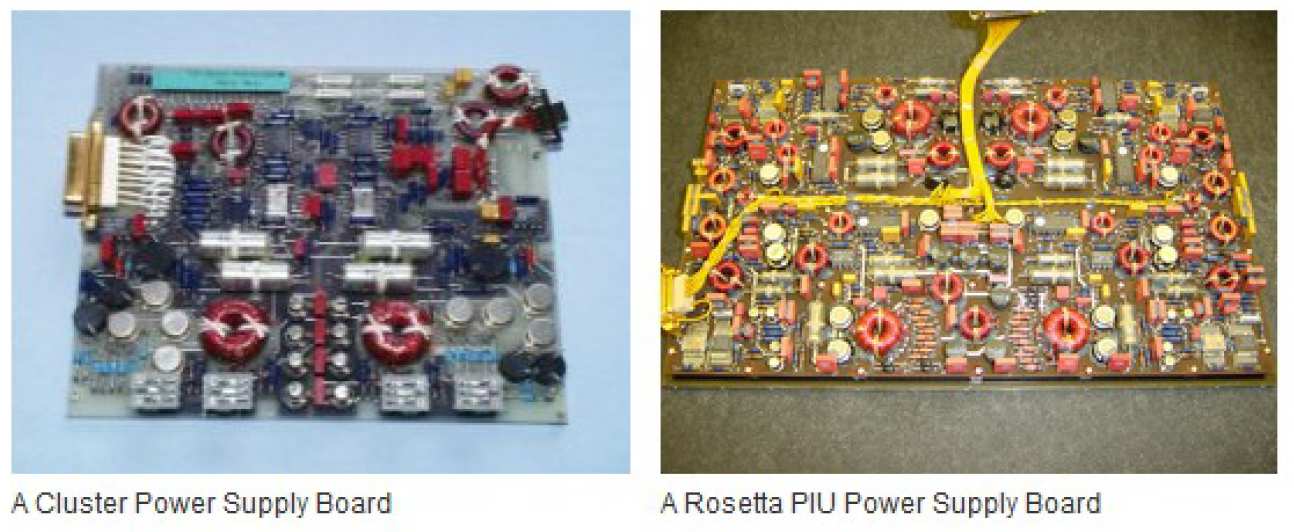Power Supplies

Power Supply Units (PSU) take the input 'primary' voltage from the spacecraft power sub-system (typically 28V DC) and convert it into the various 'secondary' voltages required by the instrument analogue and digital electronics via one or more DC-DC converters. Usually the 28V line is redundant requiring a separate DC-DC converter(s) which will be utilised in the event of a fault with the main primary or secondary power lines. Secondary voltages are distributed to the various sub-units via power switches.
Our laboratory has over 25 years experience of radiation hard power supply design. PSUs have been flown both as Primary Investigator (PI) and Co-Investigator (Co-I) built hardware on a large number of space mission experiments (Cluster, Double Star, Rosetta, Ulysses, Venus Express, Cassini, Mars-96, Equator-S etc.). Designs range from a reasonably simple unstabilised secondary voltage producing devices to more complicated iterations featuring line and load regulation on one or more dedicated DC-DC converters. For reasons of isolation and efficiency switch mode designs are always used.
During the early phases of an instrument design the input power ripple and instrument loading are assessed to determine the level of complexity needed. In the case of magnetometers, regulation is of particular importance in order to minimise the appearance of offset drift on the sensor output due to power variations. In the case of magnetometers, secondary voltages of typically ±3.3V, ±5V, ±12V, ±19V are needed. In the case of the Rosetta PIU 28V is additionally routed to the energetic particle experiments where the high voltage supply is located.
There are a number reasons why we choose to design and manufacture PSUs in-house rather than fly commercially available devices typically implemented as an ASIC. These include
- control over PSU Electromagnetic Conformance (EMC) condition ie compatibility with the spacecraft grounding regime etc.
- radiation tolerance i.e. control over PSU component device selection.
- flexibility for PSU redesign compensating for load and line changes as instrument design migrates from breadboard to flight model and the ability to tune a basic design for particular sensors.


